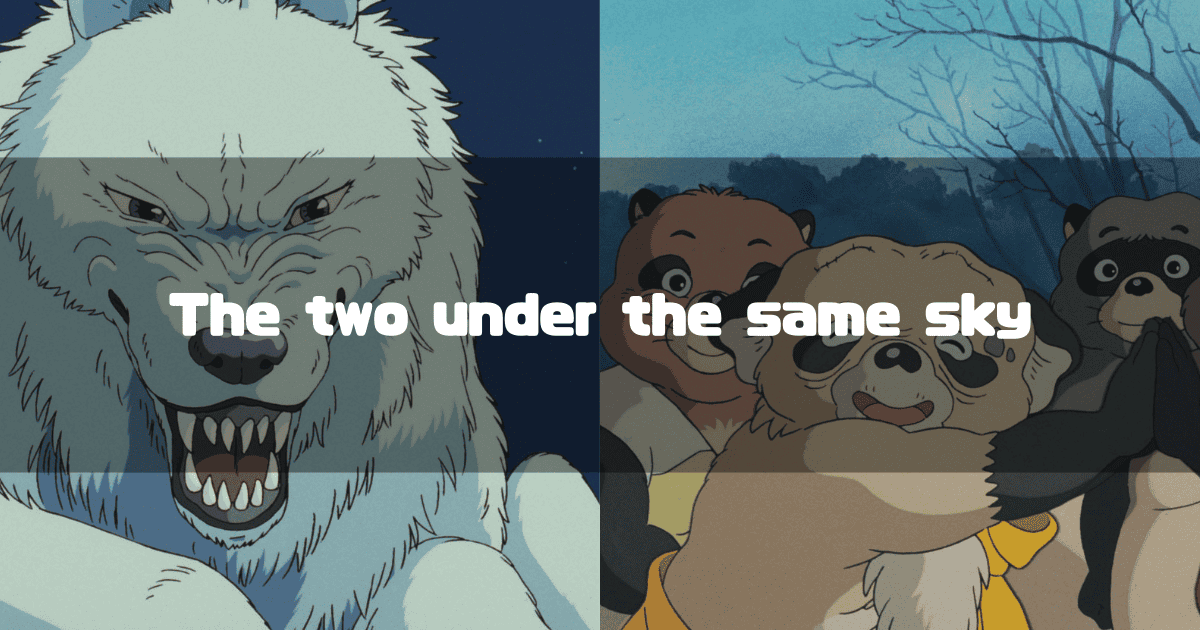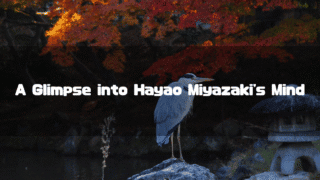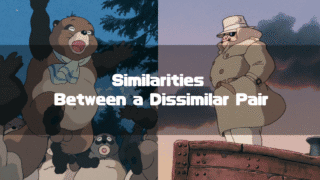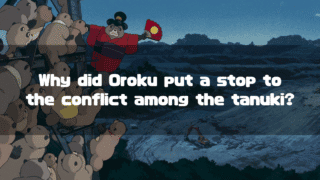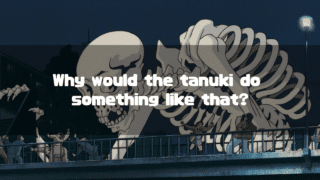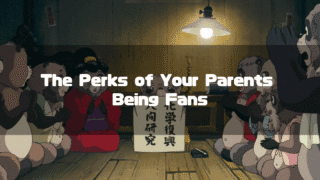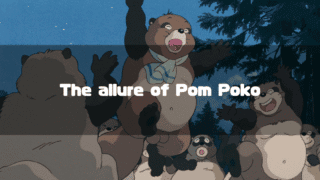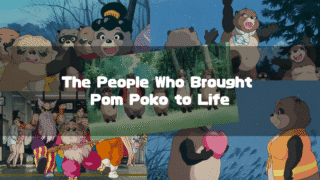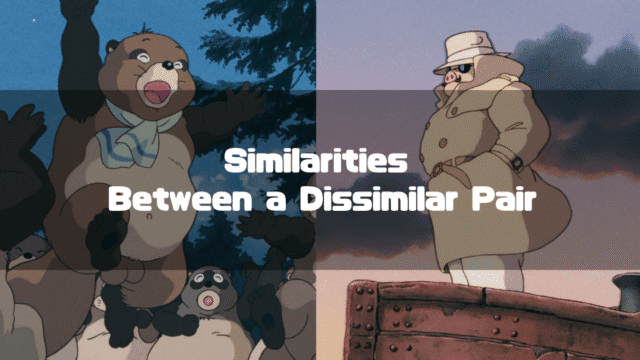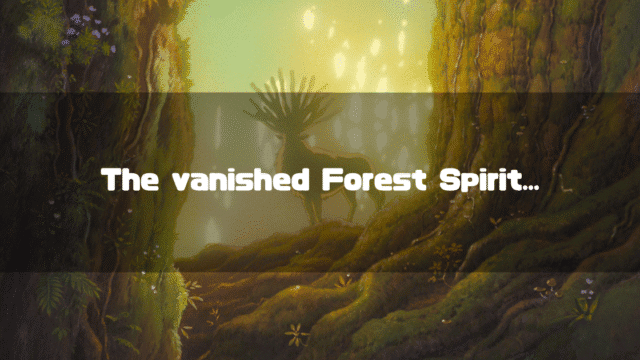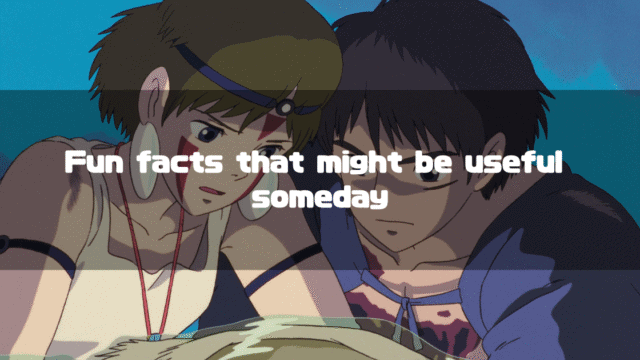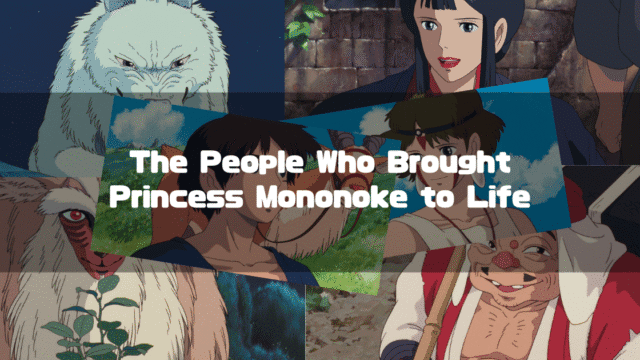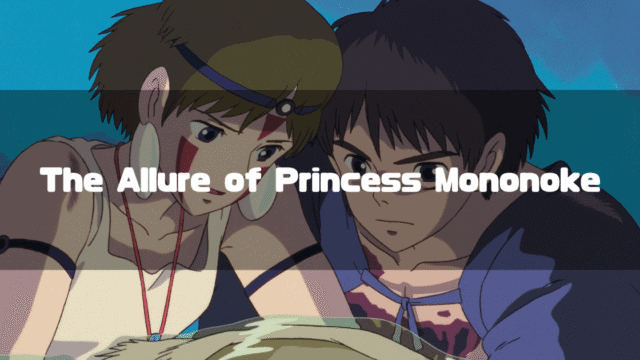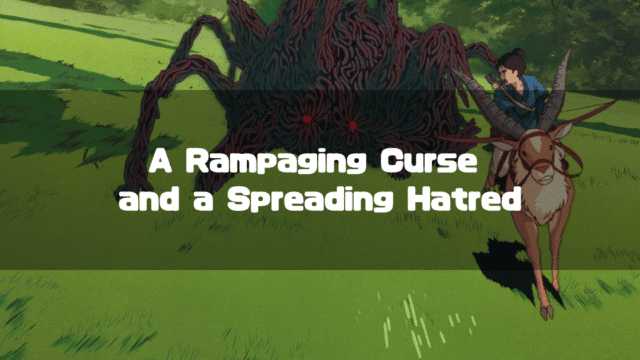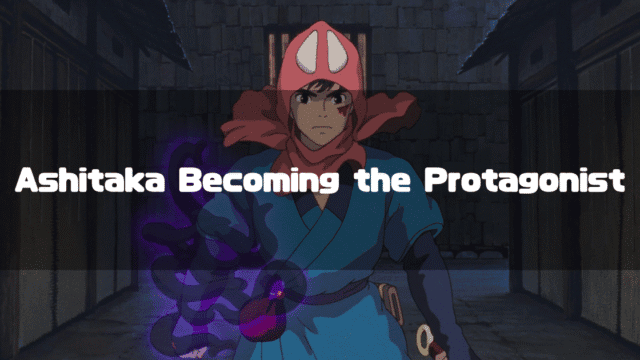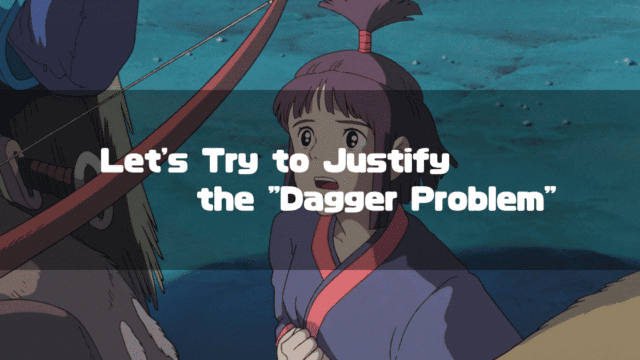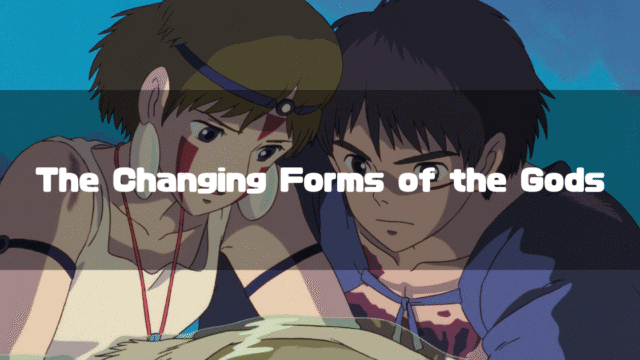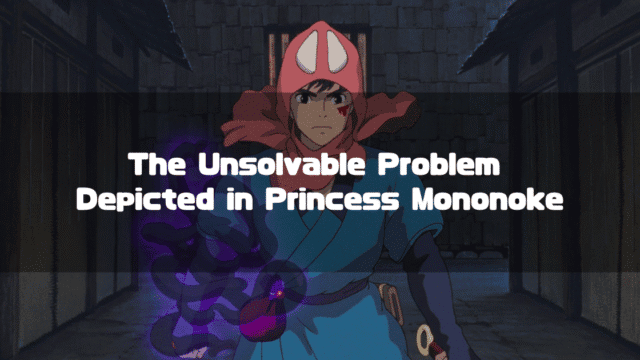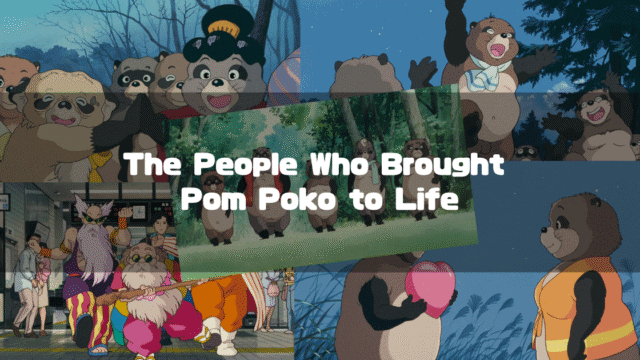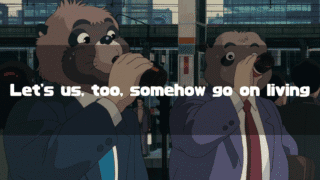Princess Mononoke(Studio Ghibli Official) is a feature-length animated film directed by Hayao Miyazaki, released in 1997.
It’s a memorable film I saw in theaters as a child and still love very much. However, the first “Ghibli film” I ever saw in a theater was Pom Poko(Studio Ghibli Official). Directed by Isao Takahata and released in 1994, it remains my favorite “Ghibli film” to this day.
Of course, I own both on Blu-ray and have watched them over and over again. In doing so, for some reason, I began to feel that “Ah, Princess Mononoke is Hayao Miyazaki’s version of Pom Poko.“
Of course, the two are completely different films, but I can’t help but feel a common thread running through them.
This time, I’d like to consider the connection between the two films from several aspects.
First, let’s look at the strange similarity between Tsurukame Oshō and Lady Moro.
*This article is an English translation of the original Japanese article, 「もののけ姫」は宮崎駿が作った「平成狸合戦ぽんぽこ」であるという話。.
Let an AI walk you through the highlights of this post in a simple, conversational style.
-
The “complex feelings towards humans” shared by Tsurukame Oshō and Lady Moro
Tsurukame Oshō is a tanuki who once tricked people to become a “Oshō”(priest) but ended up fulfilling that role sincerely. Similarly, Lady Moro is raising San, suggesting she doesn’t fundamentally hate humans. It’s imaginable that both had good relationships with humans in the past and are depicted as “beings forced into hostility” due to changing circumstances. -
A shared structure as a “story with a known ending”
Both Princess Mononoke and Pom Poko are stories where the audience already knows the “ending of defeat.” The difference in perspective is that the former is seen from the human side, and the latter from the tanuki side. Both are stories about “losing something from the past.” -
The resonance of an ending that says “still, we must live”
Pom Poko depicts “somehow, go on living,” while Princess Mononoke shows a “pathetic revival,” both portraying life that continues beyond defeat and loss. Although far from ideal, they contain a strong message of “still, we must live,” showing a way of hope in an age of loss. -
The narrative of the era posed by the conclusion of the Nausicaä manga
The Nausicaä manga, which concluded in 1994, is a story of resolving to “live on” despite knowing they are doomed. Like Pom Poko and Princess Mononoke, it speaks to an era of “turnabouts” like the bubble economy collapse, saying “the world is still beautiful.” This group of works can be positioned as “stylish stories” that affirm life even in despair.
The Similarities Between Princess Mononoke and Pom Poko
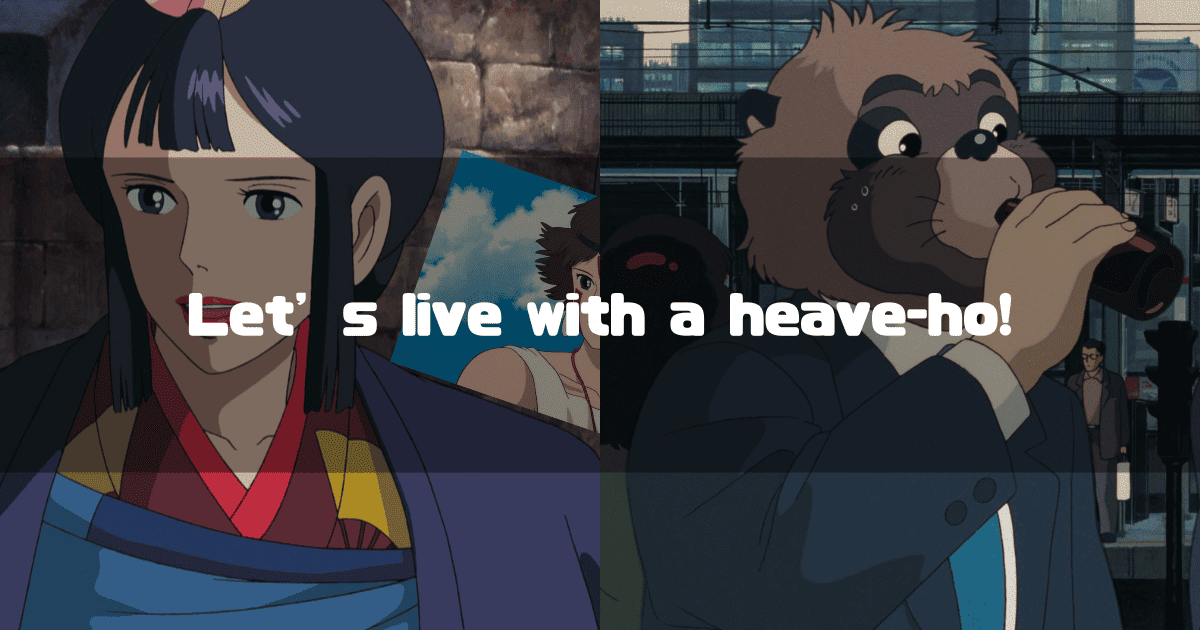
Tsurukame Oshō and Lady Moro
The old, wrinkled Tsurukame Oshō and the bewitching Lady Moro couldn’t be more different. However, if we look at their “lives,” we can see similarities.
Tsurukame Oshō is easier to understand, so let’s start with him. An important hint is the following line from Tsurukame Oshō:
- “We raccoons are too trusting. It’s easy for humans to fool us. Then we get into trouble. Does everyone understand?”
- “The human who died were victims of this war. Firs we should pay our respects to the memorise of those who died”
I want to think about this line, but the most important point is that the name “Tsurukame Oshō” is strange in itself.
“Oshō” is originally a human job. Since Buddhism originated with humans, this is a matter of course. Why is Tsurukame called by the title of “Oshō,” which should be at the forefront of “Buddhism”?
We can understand this from the first line. In the past, Tsurukame Oshō probably disguised himself as the Oshō of the deserted Manpuku-ji Temple to deceive people. However, it went so well that he was treated as a “Oshō” by humans and continued to act as one for a long, long time. In other words, he overdid the service.
And, even after people stopped caring for Manpuku-ji Temple and it fell into ruin, Tsurukame Oshō stayed in that place.
Somehow, we can see an aspect of Tsurukame Oshō that is fundamentally friendly towards humans.
And Lady Moro from Princess Mononoke has a similar feel.
In the first place, Lady Moro exists within the story of Princess Mononoke as a being with a strong contradiction. That is, while showing hatred for humans, she lovingly raises San, who is supposed to be human.
Why does this contradiction occur? I have actually summarized the details of this in a previous article below.
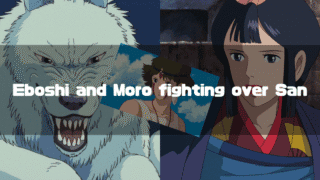
In the article above, I wrote about Lady Moro in connection with Lady Eboshi, but if I extract my thoughts on Moro’s contradiction, the key point is actually a statement made by Director Miyazaki in the documentary How Princess Mononoke Was Born(「もののけ姫」はこうして生まれた, in Japanese):
“I can’t help but remember the dog I used to have.”
(Original Text, in Japanese)
「つい、自分の飼っていた犬を思い出す。」
“You see, you didn’t grow up with a dog that was your other half as a child…”
(Original Text, in Japanese)
「やっぱりね、子供の頃に一心同体の犬と育たなかった・・・」
Both are remarks made by the director while correcting the animation of Lady Moro or the mountain dogs, and they reveal Director Miyazaki’s feelings for dogs, as he had one in his childhood.
The important thing is, would a director with such feelings for dogs depict a mountain dog as a being that unilaterally curses humans? Personally, my answer is NO.
In other words, it seems that Moro, being a dog, does not despise humans in her heart of hearts.
However, just as with Tsurukame Oshō, the situation surrounding her changed dramatically, and for the sake of the other forest dwellers and her children, she had to confront humans.
Moro’s raising of San may have been based on a simple feeling she had long held, but in the “present” of Princess Mononoke, she had to confront humans.
Conversely, it’s imaginable that there was a past where Lady Moro got along well with humans.
If you watch the main story of Princess Mononoke, the other forest dwellers direct their aversion towards “humans” in general, whereas Lady Moro directs her hatred only towards the leader of that moment, “Lady Eboshi.”
The fact that Lady Moro only ever harmed Lady Eboshi also proves this.
To summarize the above,
- Based on the name Tsurukame Oshō, we can see the days he lived as a Oshō while deceiving humans as one.
- Considering that she is raising San with great care, it is imaginable that Lady Moro also had some kind of good relationship with humans.
I believe this is the case.
A Story with a Known Ending
The most important similarity between Princess Mononoke and Pom Poko is that they are “stories with a known ending.”
We know that this world has not become a paradise for tanuki, and we know that giant spirits do not exist.
In other words, the tanuki and the spirits will be defeated, no matter how you look at it.
And, Pom Poko is that story told from the tanuki’s (or spirits’) side, and if you tell it from the human side, it becomes Princess Mononoke.
Princess Mononoke seems to depict both sides well, but since the protagonist, Ashitaka, is human, it cannot escape the “human side” perspective. San is also human, one way or another.
In this way, I feel a connection between the two works due to the fact that they are generally “stories of defeat,” that “it is not humans who are defeated,” and “the commonalities between Tsurukame Oshō and Lady Moro.” However, we can also see a slight similarity in the way the stories end.
Somehow, go on living and A Pathetic Revival
As mentioned earlier, the two stories can be seen as “stories of defeat,” but they also briefly depict what comes “after the defeat.” In Pom Poko, it’s as “somehow, go on living,” and in Princess Mononoke, as “a pathetic revival.”
Looking at the depiction of “somehow, go on living” , its meaning would be, “Even if we couldn’t get what we wanted (victory), and no matter how unseemly, we still live on.”
On the other hand, “a pathetic revival” is something mentioned in the production documentary of Princess Mononoke, How Princess Mononoke Was Born(「もののけ姫」はこうして生まれた, in Japanese),” where we learn that Director Miyazaki said he would “go with a pathetic revival” for the end of the story.
If you consider the conflict as “all of humanity VS the ancient spirits,” Princess Mononoke is indeed a human victory. However, in the sense that they lost the fertile land of the “Forest of the Deer God,” it’s hard to say that humans were completely victorious. At the very least, it seems to have become impossible to operate the “tatara ironworks,” which consume a large amount of wood, in that place.
Nevertheless, the forest is undergoing a slight, “pathetic revival.” And in that forest that has undergone a “pathetic revival,” the people, also undergoing their own “pathetic revival,” will still live on.
In this way, the endings of the two works are not exactly ideal, or rather, they end with the characters losing something truly precious but still living on as they are.
Basically, based on the above, I have come to believe that “Ah, Princess Mononoke is Hayao Miyazaki’s version of Pom Poko.“
Of course, I welcome different opinions.
The Major Event of the Nausicaä of the Valley of the Wind Manga’s Conclusion
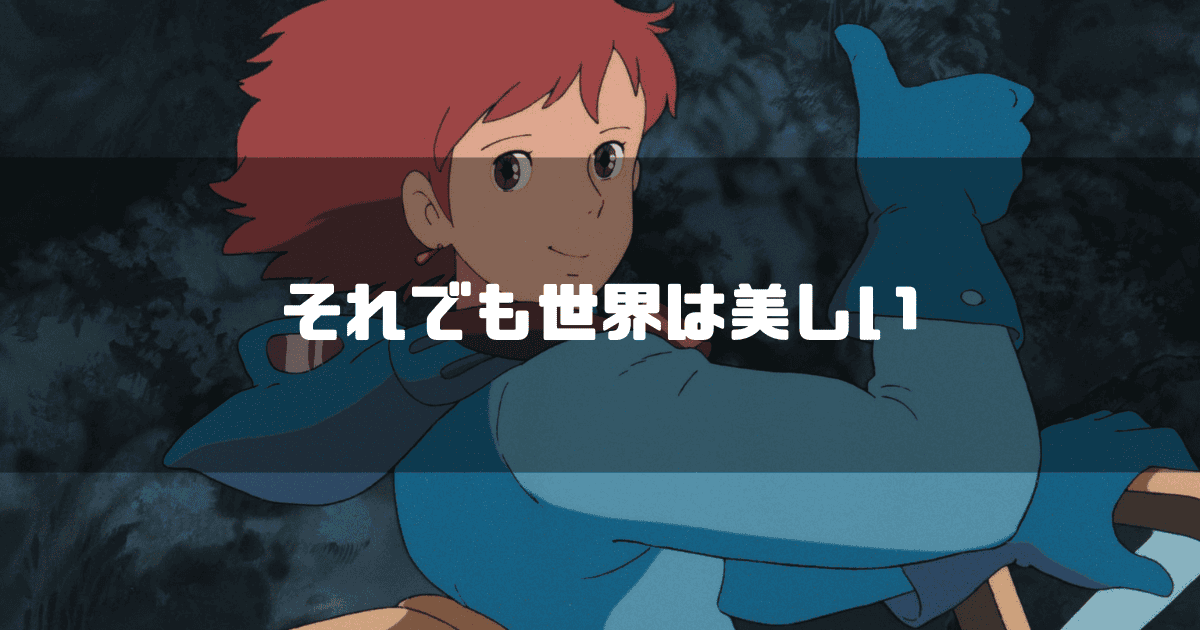
Now, I’ve basically said everything I wanted to say up to this point, but I think the situation becomes a little more three-dimensional if we add the supplementary line of the manga version of Nausicaä of the Valley of the Wind, so I’ll talk about that.
This is because the manga version of Nausicaä of the Valley of the Wind began serialization in the February 1982 issue of “Animage” magazine and, after some interruptions, concluded in the March 1994 issue, perfectly overlapping with the release of Pom Poko. Moreover, it seems to have been an important point (a paragraph) for Director Miyazaki before he made Princess Mononoke.
The Shocking Ending of the Nausicaä of the Valley of the Wind Manga
I think many people have seen the movie version of Nausicaä of the Valley of the Wind, but the content of the original manga is completely different from the movie. To be precise, the beginning is the proper basis for the movie, but from the middle, the development is completely different.
Now, trying to summarize the plot comprehensively would deviate from the purpose of this article, so I’ll summarize the most important parts in a bulleted list with complete spoilers:
- The Sea of Corruption is a “world purification device” created by the old humanity.
- Nausicaä and her people are a kind of artificial human, adjusted to be able to live even in polluted air.
- Nausicaä and her people cannot survive in the clean air purified by the Sea of Corruption.
- The old humanity was waiting in cocoons in a certain place for the time of their revival.
- Nausicaä confronts this old humanity (mentally) and is told that they can be treated to survive in clean air.
- However, Nausicaä refuses their offer, destroys the old humanity, and decides to live in a world where the Sea of Corruption spreads. Knowing that they themselves will perish.
Only a very, very small number of people, including Nausicaä, know about this desperate choice she made and its meaning. Truly a small number. You could probably count them on one hand.
This is the shocking ending of the manga version of Nausicaä of the Valley of the Wind.
Nausicaä’s Words of Resolve: “We Must Live”
The final panel of the manga version of Nausicaä of the Valley of the Wind closes with the words “We must live.” It is a responsibility for the decision she made, but at the same time, it is a message to the people living in the era around 1994.
Japan experienced two “turnabouts” leading up to the 90s. The first was the end of the war, the second was the collapse of the bubble economy.
I didn’t even exist at the time of the first, and I was fortunate or unfortunate enough to be a child during the second. I have not “experienced” the moment the world was turned upside down.
But what did it mean for the people who were adults during the second turnabout to spin a “story”?
I believe the answer was Nausicaä of the Valley of the Wind, Pom Poko, and Princess Mononoke.
All of these stories end with living on in a world that has lost “what was there,” “what we wished was there.” And, very importantly, that “lost world” is not depicted as being so ugly.
In Nausicaä of the Valley of the Wind, there were still cheerful people; in Pom Poko, a friend thought lost was there; and in Princess Mononoke, there were a beautiful forest and people trying to revive, however pathetically.
In the end, wasn’t what “We must live,” “somehow, go on living,” and “A pathetic revival” were appealing to us, who were children at the time, was that “the world is still beautiful“?
And if so… isn’t that just so stylish?
The images used in this article are from “Studio Ghibli Still Images“.
About the Author
Recent Posts
- 2025-10-15
Indiana Jones and the Dial of Destiny(2023):Historical Background-WWII, the Real Dr. Schmidt, the Siege of Syracuse, and the Antikythera Mechanism - 2025-10-08
Why Does Children Who Chase Lost Voices Feel So Ghibli-esque? [Makoto Shinkai’s “Tale of Farewell”] - 2025-10-07
5 Centimeters per Second: Characters, Voice Actors, Character Analysis and Character Map - 2025-10-06
5 Centimeters per Second: Full Synopsis, Analysis, Ending Explained & Character Map (Spoilers) - 2025-10-04
5 Centimeters per Second Is Neither Depressing Nor Terrible: A Positive Interpretation of the Film

